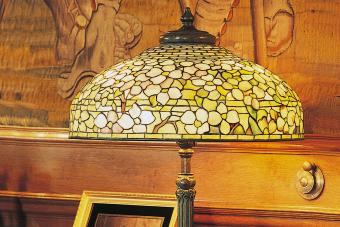
An antique auction is an opportunity to offer an item for bidding or to purchase an item through bidding. Held both in person and online, these types of auctions are particularly popular for antiques and collectibles where the value of a piece can fluctuate dramatically based on its popularity.
How It Works
The seller can either auction items directly or consign them to an auction house. An auction house provides more services, including valuation; advertising or marketing, including a catalog; and managing the actual bidding, payment process, and delivery; and has a pre-existing reputation and body of bidders. However, these services cost more than direct auctions, through charging premiums to sellers and buyers. Online auctions like eBay provide the auction platform and body of bidders, and so charge lower premiums, but the seller is still responsible for handing the transaction, so is at risk for buyer's fraud, and does not have the protection of professional valuation.
Premiums
Seller premiums, the amount the seller pays to have an item auctioned, usually start at some minimum amount and are set at a certain percentage of the final price. Typically, the higher the price of the item is set, the lower the percent premium. Buyer premiums are also a percentage of the final price.
Reserves
Because the price bidders are willing to pay may be considerably less than the price the seller would like to accept, sellers can set reserve, a minimum final price. If the highest bid the item receives is not equal or greater to the reserve, the item does not sell. The seller typically still pays the auction house or online auction platform some kind of listing fee.
Previews
In-person auctions usually have preview periods, during which potential bidders are able to inspect the items and ask the auction house representatives some questions. These are usually held during the two or three days before an auction. Items are rarely available for hands-on inspection during the auction. Attending previews is free and does not oblige you to bid.
Bidding Process
Bidding requires registration and in some cases, usually for very high-end auctions, proof of the ability to pay, such as a certified check or a bank statement. Contrary to movie wisdom, you can't bid inadvertently in a live auction by nodding or blinking; you usually have to raise a paddle with your assigned identification number.
Kinds of Auctions
English Auction
The most common kind of antique auction is the English auction, in which the item begins at a price usually lower than the estimated final price, and the auctioneer (or software) increases the price by set intervals. Bidders indicate their willingness to pay each subsequent price until there are no higher bids and the last bidder is the winner. This bidding process is transparent; each bidder knows what the most recent bid is.
Silent Auction
In this kind of auction, each bidder submits one bid without knowing how much other bidders are offering. The highest bidder wins. Here, bidders must make very astute predictions of how much others are willing to pay and bid just enough above that amount to win, but not so much that they overpay for something they could have won more cheaply.
Dutch Auction
This auction is the reverse of the English auction. Bidding starts at a price well above the estimated value and the auctioneer lowers the bid by selected increments. The first person to accept the offered bid wins the item. Like silent auctions, this requires the bidder to anticipate the price others would offer and make an offer just before that moment.
Where to Find Antique Auctions
Live Auctions
Pitfalls and Frustrations of Auctions
There are several potential pitfalls, especially for buyers, in antique auctions. First, it's very easy to get caught up in the excitement of bidding, or become determined not to let another person have the item that you've fallen in love with, and bid more than you expected or even more than the item is worth. The best way to prevent this is to set an amount and stick to it. If necessary, bring along a companion who will keep you to your budget. Keep in mind that the final bid is not the final price, as you'll have to pay the buyer's premium and possibly sales tax on top of that.
It can be very difficult to make decisions about your budget if there's more than one item that you'd like to purchase, since you don't know the real price of any of them until the bidding is over. If you don't bid on the first piece you'd like in the hopes of winning the second piece, you can walk away with nothing if the second piece goes too high for your budget, and this is especially frustrating if the first piece went at a bid lower than you would have paid. Similarly, you can bust your budget on the first piece and miss a bargain later.
If you can't attend a live antique auction (or don't trust yourself during live bidding) you can leave an absentee bid in which you state the top amount you'd pay and authorize the house to bid on your behalf. However, you do have to trust the auction house not to set your own bid against you; if your top price is $100 and the last bid they receive is $50, they do financially better if they put in your top bid at $100.
Auction buyers are still vulnerable to buying reproductions as originals. An auction house's description of an antique provides some guarantee under certain conditions. Be sure to read the fine print about descriptions and what terms mean as well as the conditions of the guarantee.







